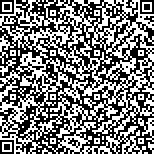| 摘要: |
| 采用细胞计数法,研究了重要经济微藻——雨生红球藻对10种基因工程常用选择试剂的敏感性。结果表明,雨生红球藻对除草剂草丁膦和抗生素Zeocin比较敏感,50μg/ml的草丁膦和25μg/ml的Zeocin可明显地抑制雨生红球藻生长,尤其是50μg/ml的草丁膦能导致细胞两周内全部死亡;高浓度的卡那霉素和硫酸链霉素也可抑制雨生红球藻的生长;雨生红球藻对包括氯霉素和G418在内的其他6种试剂不敏感,即使处理浓度高达1000μg/ml。本文结果提示草丁膦可能是雨生红球藻基因工程适宜的选择试剂,其相应的抗性基因bar可能成为雨生红球藻遗传转化的选择标记基因。 |
| 关键词: 雨生红球藻 选择标记基因 选择试剂 草丁膦 |
| DOI: |
| 分类号: |
| 基金项目:中国科学院知识创新重要方向性项目,KZCX3SW215号 |
附件 |
|
| STUDY ON SENSITIVITIES OF HAEMATOCOCCUS PLUVIALIS TO TEN SELECTIVE REAGENTS FOR GENETIC ENGINEERING |
|
TENG Chang-Ying1,2, LIANG Cheng-Wei1,3, QIN Song1, ZENG Cheng-Kui1
|
|
1.Institute of Oceanology, Chinese Academy of Sciences, Qingdao, 266071;2.Yantai Normal College, Yantai, 264025;3.Graduate School, Chinese Academy of Sciences, Beijing, 100039
|
| Abstract: |
| Haematococcus has high economic value for the mass production of astaxanthin in unfavorable environments. The high mass production of astaxanthin by Haematococcus remains problematic since the inhibition of cell division occurs while astaxanthin is produced. Although it has proven to be true that through genetic engineering, target products is abundant in many species. Study on increasing the production of astaxanthin in Haematococcus through genetic modification is so far not available, because the genetic transformation system of Haematococcus has not been built up which it is necessary to develop. In order to choose a selectable marker gene used for steady genet ic transformation, sensitivities of H. pluvialis to some common selective reagents for genetic engineering were studied in cell-count method.
In this paper, ten selective reagents were studied, including ampenicillin (Amp), kanamycin (Kan), G418, streptomycin (Str), chloramphenicol (Cm), hygromycin (Hyg), penicillin G, teicoplanin, basta and zeocin. Results showed that Haematococcus is highly sensitive to basta and zeocin. 50Lg/ml of basta and 25 Lg/ml of zeocin significantly inhibited cell growth. Dead cells could be found under microscope several days after being treated by the two reagents. All the cells died after being treated by basta two weeks later, while the number of cells treated by zeocin began to rise up about one weeks later, which might be ascribed to the decomposion of zeocin in light. High concentrations of kanamycin (≥200Lg/ml) could also result in the decline of the cells number. It was the more sensitive reagents in this study but for basta and zeocin. However, twenty days after treated by 1000Lg/ml kanamycin, half of H. pluvialis cells still survived. High concentrations of streptomycin (≥500Lg/ ml) could inhibit cell growth too, but it (at even 1000Lg/ml) could not kill the cells completely. No sensitivity to the other six reagents has been shown after 20 days of treatment, including Hyg (1000Lg/ml), Cm (1000Lg/ml), Amp (1000Lg/ml), teicoplanin (1000Lg/ml), penicillin G (2000Lg/ml) and G418 (1000Lg/ml). It is suggested that basta could be suitable agent and its bar gene could be a promising selectable marker for genetic engineering of H. pluvialis.
Details of the effect of basta in different concentration (200Lg/ml, 100Lg/ml 50Lg/ml and 25Lg/ml ) on H. pluvialis were also studied. Results showed that all the motile cells in concentration of 200Lg/ml, 100Lg/ ml and 50Lg/ml disappeared 2, 6 and 10 days later, respectively. However, non-motile cells died 3, 8 and 10 days later respectively. The basta in 50Lg/ml is recommended to apply in genetic engineering.
Considering the high toxicity of basta and zeocin, it is suggested that other sensitive selective reagents should be applied in genetic engineering. |
| Key words: Haematococcus pluvialis, Selectable marker, Selective reagent, Basta |
